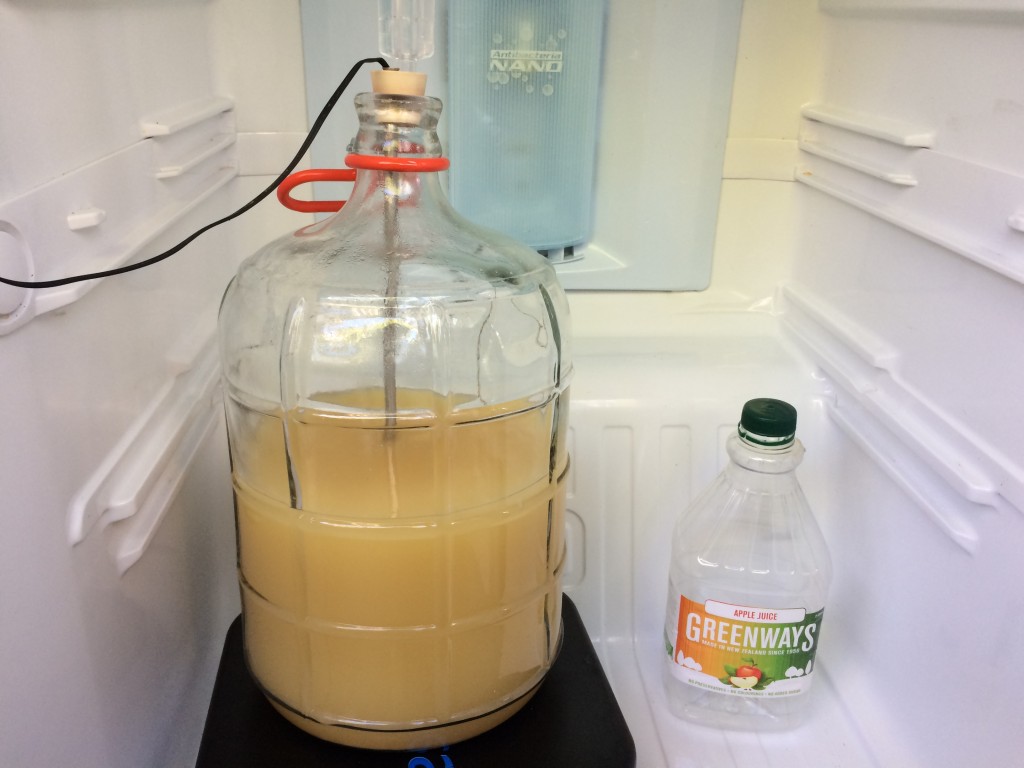
For this coming year I have one modest little homebrewing goal… To become New Zealand’s champion homebrewer. Piece of cake right? We shall see. At any rate, my goal is to brew a batch of at least one recognized BJCP style every two weeks at a minimum until October(ish) of 2016, when it will be time to package things up and send my brews off to SOBA’s National Homebrew Competition (New Zealand’s big one). In the process I thought I’d document my recipes, process, and tasting notes and post everything here on the site.
I’m kicking things off with BJCP style C1A “New World Cider”.
From the BJCP guide: “A refreshing drink of some substance – not bland or watery. Sweet ciders must not be cloying. Dry ciders must not be too austere.”
In many respects cider couldn’t be simpler; add juice, pitch yeast: done. That said, the quality of your juice is critical, as is a good fermentation. Cider made with the wrong varieties of apples is often lack luster, and one’s choice of yeast will dramatically effect the quality and style of the cider. For example, a wine yeast will typically eat through all residual sugars and (depending on the strain) strip out a lot of apple flavour. This often leaves one with something more akin to a dry white wine than what we think of as cider. Conversely, an ale strain will leave more sugars behind but can have a variety of impacts on flavour (depending on the strain), some good, and some not so good. And then of course there are choices to be made regarding back sweetening and carbonation, all of which can vary and still be within style.
Not having the time to sit around juicing several KGs of apples I thought I’d simply head to the store and buy the best quality apple juice I could find. I decided not to overthink this one. I’m skipping the pectic enzyme and nutrients (largely because I didn’t have any on hand) and we’ll see where I land with store bought juice as a starting off point. I can always correct things with future batches.
My plan is to ferment 6 liters of juice in a 11.5 gallon carboy and rack off to a secondary 5 liter demijohn for aging.
Recipe:
6 Liters of Greenways organic apple juice (no preservatives or added sugars).
1 pack of Safale US-04 English ale yeast.
Starting gravity: 1.049
Add 6 liters of juice to sterilized fermenter, aerate by shaking carboy, and sprinkle dry yeast directly into juice. Set fermentation temperature to 18.5 degrees.
Notes:
November 20th: Pitched yeast.
November 22nd: This was one of the oddest fermentations I have ever experienced. Within 24 hours a krausen had formed, the following day it was gone but a spritzy bubbling could be seen on the top of the juice, almost like a freshly poured soda. Concerned by the Krausen dropping I took a gravity reading. Gravity was down to 1.035, so at least something was happening. We shall see.
December 3rd: I can still see the same spritzy bubbles on top of the juice and everything is still very cloudy. I took a gravity reading and it was down to 1.002. Nice! Sample was pretty decent for such a green cider. There is still a nice apple flavour and aroma and it didn’t have that bone-dry, white wine taste that I’m not a fan of in a cider. There are more tannins and acid present than I was expecting from store bought juice (in a good way). There is a musty amaretto note to the aroma that I expect will age out. I think the US-04 has done a nice job of producing fruity esters and preserving the apple quality. This cider is still extremely green but my hopes are high for the flavour. I am however, concerned about my ability to eventually clear this cider given the absence of pectic enzymes. I racked to a 5 liter demijohn and filled right up into the neck. Now the aging game begins.
January 5th: Still Cloudy and showing no signs of clearing I added some pectinase, post fermentation. This is not ideal as the enzyme is less effective (if at all) with alcohol present, however I have read reports of it working and so I thought I would give it a try.
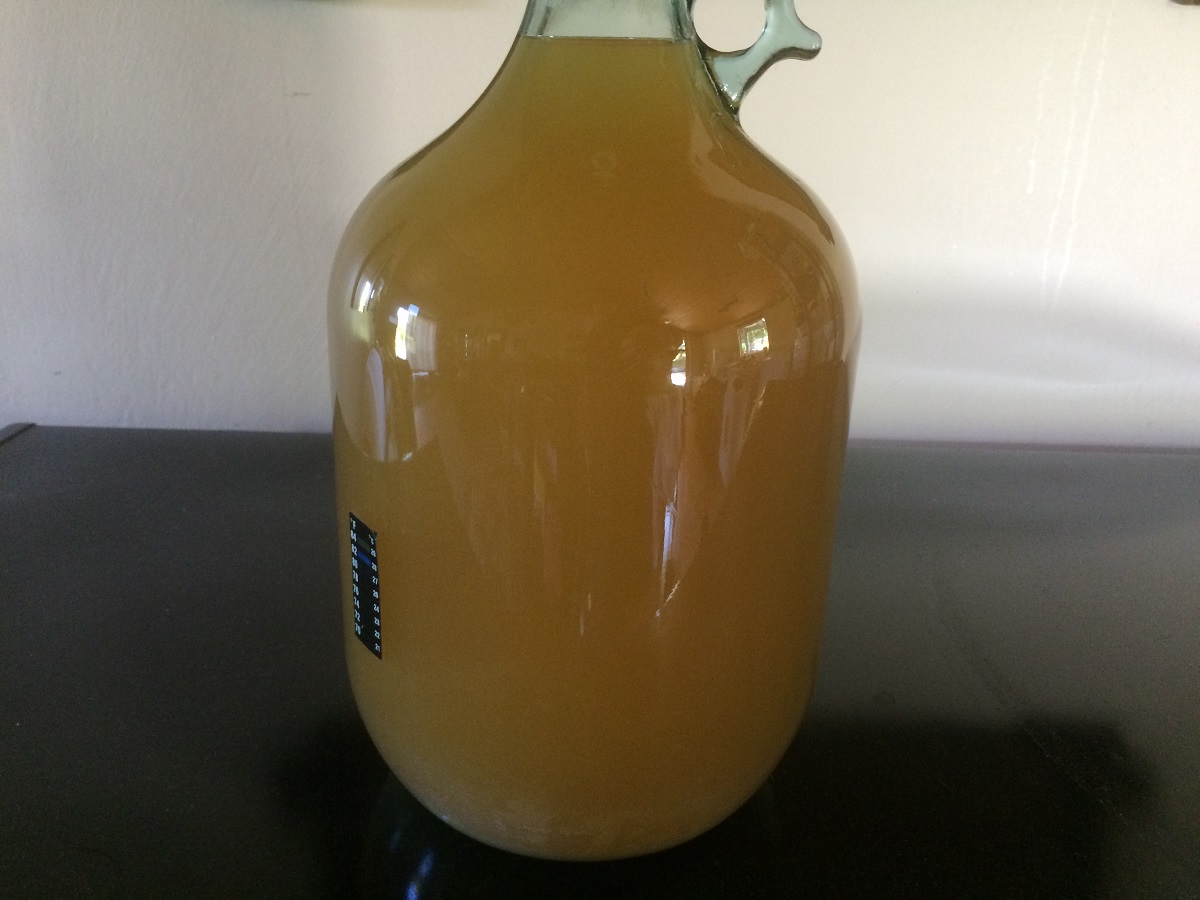
January 12th: The pectinase seems to have had little effect. There seems to have been a little settling, however it’s insignificant enough as to leave me unsure if the results are from the pectinase, or just a little additional time to settle. Loosing hope for this cider I decided to add to Tablespoons of bentonite, (rehydrated and mixed in with 100ml boiling water before adding to cider). Bentonite is not known to clear a pectin haze, but this this was the only other trick I had up my sleeve, so I thought I’d give it a go.
January 20th: There has been a little noticeable clearing, but not that much. The cider is still fairly cloudy. I cold crashed in my keezer to see if that might help at all.
February 4th: One more point had been shaved off the gravity leaving me with a 1.001 cider. Much less cloudy when viewed in the glass. But I will still call this “slightly cloudy”. Slightly cloudy is certainly fine for drinking, but puts this out of style for competition. On the positive side, this cider tastes really good! Fairly dry, the US-04 did a great job of preserving some apple flavour and an impression of sweetness, if not any actual sweetness. It’s tart with a delicate apple flavour and aroma. The musty amaretto flavour is gone, and there is none of that yeasty flavour that I often find in commercial ciders. The balance is great; not flabby or thin at all, as can sometimes happen with the wrong apple varieties. I’m quite disappointed in the cloudiness of this cider because on taste alone I think this is a winner.
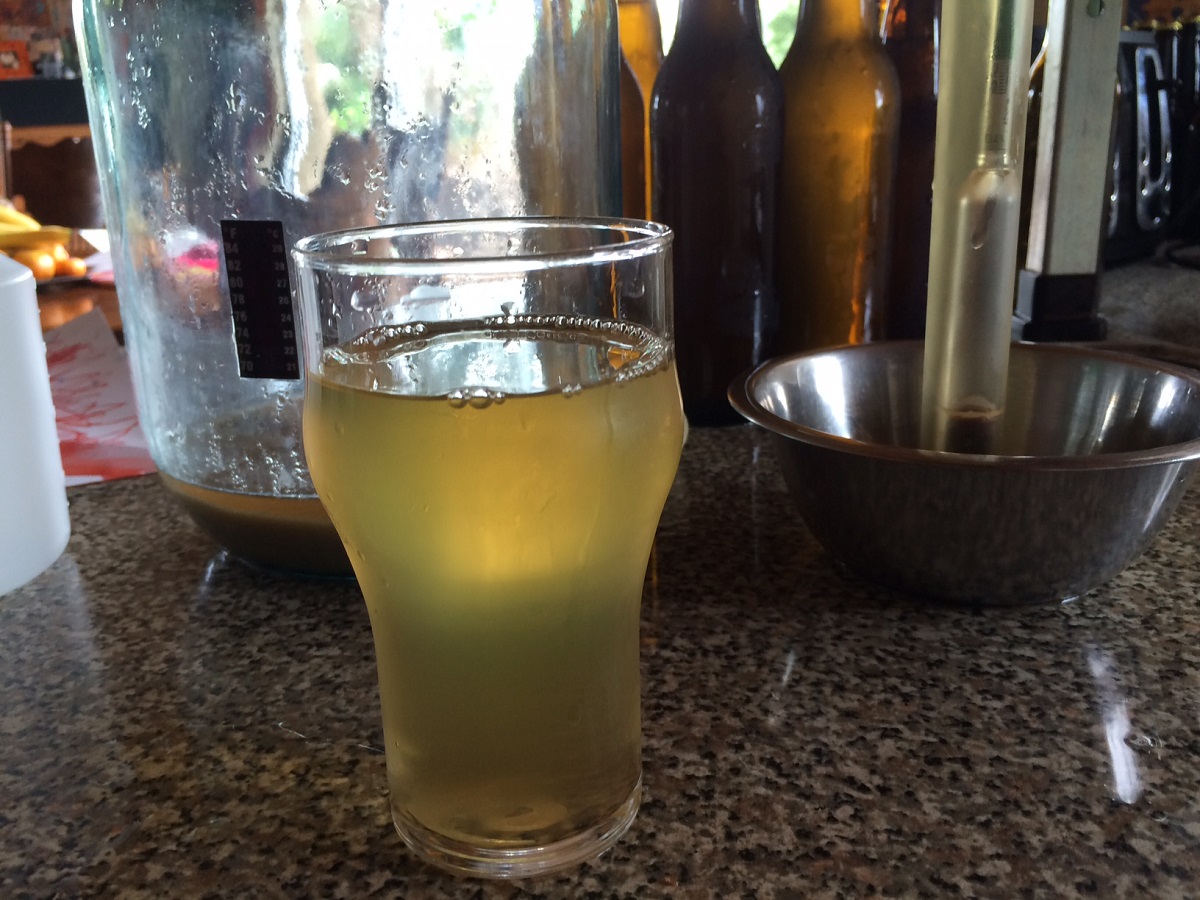
I bottled up what I had and added 1.5 coopers carb drops to my 500 ml bottled (cutting a carb drop in half with sanitized scissors), and one carb drop in my 330 ml bottles. Because of the cloudiness, I am not sure if I will enter this in competition or not. But you never know what might happen as it ages. This cider is still relatively young, and I’m impressed with the flavour for such a young cider, made with store bought juice and with no back sweetening at all.
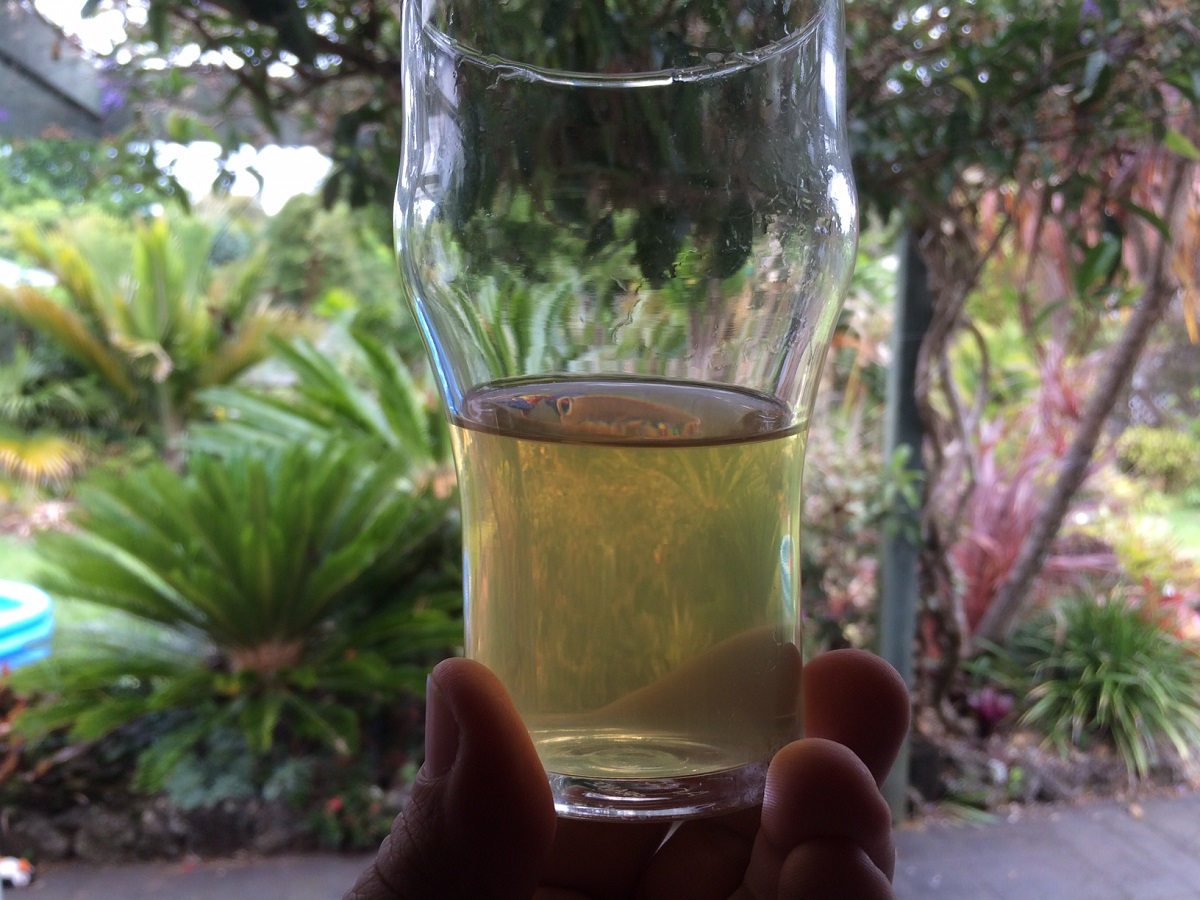
May 6th: Cider is now brilliantly clear. Flavour has improved. It’s cleaner with a good amount of apple present and a nice balance of fruit, tannins, and acidity. Nice as a dry cider but I think some back sweetening would improve it.
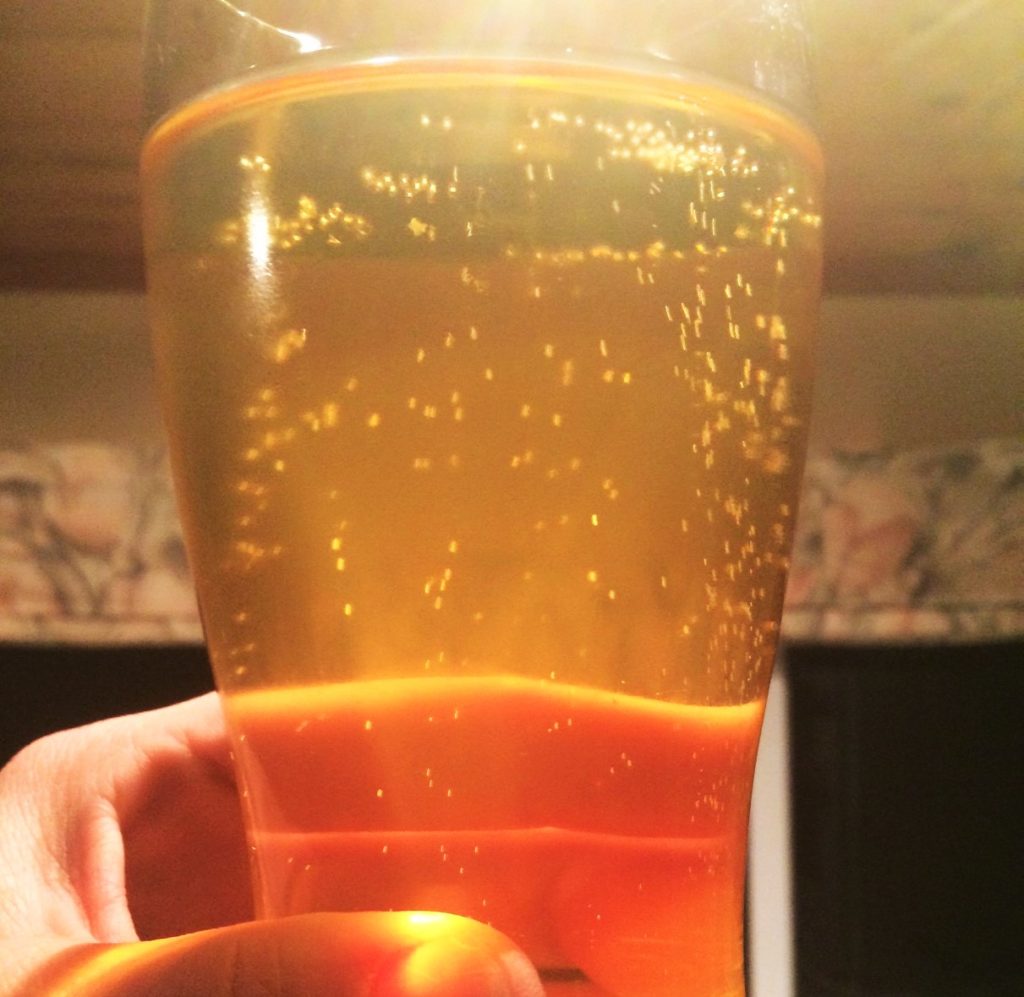
Lessons learned:
- Add pectin before fermenting.
- Greenways organic apple juice makes a really nicely balanced cider.
- US-04 works great for ciders.
- Cider really needs 4 – 6 months of aging to improve clarity and flavours.
Leave a comment below if you have any questions about the recipe or process.

I’ve tried my hand at cider brewing a few times before moving to NZ – it’s just as easy as you describe! I always took the additional step of adding 5 cups of regular white sugar to 5 gallons of (store-bought) juice, and used champagne or burgundy yeast. This would take a couple of months to ferment, so it would generally get racked at least once or twice during the process just to keep it off the sediment. In retrospect I may have overdone the sugar a bit, but the result was a consistently drinkable brew of about 16% abv. 🙂
I didn’t get much of a chance to refine the recipe before I pulled up stakes for the Land of the Long White Cloud, but just discovered this site, and it’s inspired me to track down the necessary gear and give your recipe a go! I might add a litre of manuka honey to give that yeast a bit more to chew on however…
Hey CJ,
My apology for the slow response. The comment notifications seemed to have failed me and I am only seeing your comment now.
I have only brewed a cider once before and it was over 15 years ago. That time around I juiced some apples from my own tree and added a small amount of brown sugar and maple syrup, and I used a Champagne yeast. That one won a first place ribbon in the California Mayfaire Competition, but as I say, it was a long time ago.
With this batch I just wanted to see what I was able to get out of the juice as a starting off point. Then I figured I could tweak the next batch accordingly.
I don’t love how dry of a cider wine and champagne yeast produce. My hope is that the lower attenuating and more estery English Ale yeast brings out more of the apple flavor.
It’s in secondary now and I hope to update this post in a month or two.
PS – Where did you move to NZ from? I’m a Los Angeles transplant myself.
Did you not get any off flavours from not hydrating the yeast and not aerating the apple juice? Just wondering.
Hey Takagi,
My apology for the slow response. The comment notifications seemed to have failed me and I am only seeing your comment now.
I did aerate the juice. Just forgot to mention it. I’ll update that. In my opinion there is no need to rehydrate when over-pitching as much as I did, as the main concern would be a decrease in yeast viability.
Too soon to comment on any off flavours as it’s still aging, but the last taste I had seemed promising. I hope to have an update in a month or so.
[…] post marks my second batch for this years run at the SOBA National Homebrew Comp. You can learn more about the project here. Not surprisingly I’m already well behind on my goals. Hopefully I’ll be able to pick […]
[…] third brew in what has officially been dubbed “Project NHC” was a bit of an accident gone right. My original plan was to brew a full batch of […]
[…] fourth brew for “Project NHC” was brewed back in late February to insure that I’d have a keg dark, sessionable […]
[…] my fifth brew for “Project NHC” I decided to take the Mangrove Jack’s Workhorse yeast for a test drive and brew up a […]